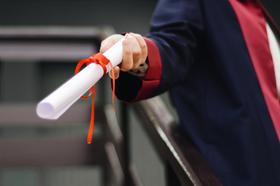The topic of sex education always sparks intense debate, and now the conversation may become even more heated. As more public schools from New York to Milwaukee contemplate providing free condoms on campus, students are caught in the crossfire of the debate.
Milwaukee Public Schools may soon join the small ranks of public school districts nationwide to provide high school students with access to free condoms. The school district's health officials cite concerns about the spread of sexually transmitted diseases as evidence of the need for a plan to make condoms accessible to students who need them. The proposed plan would allow a student to receive two condoms after a consultation with the school nurse, who would also provide the student with literature pertaining to the risks of sexual activity.
While it is not yet clear if the Milwaukee school board will approve the plan, the proposal has resurfaced a national debate over whether condoms have a place in public high schools.
The Advocates for Condom Distribution
Those who support making condoms available as part of a public high school's sex education program make several arguments:
* Condoms Needed to Prevent Spread of Sexually Transmitted Infections
In 2008, the Center for Disease Control released a study showing that one in four teenage girls in America has at least one sexually transmitted infection, and that nearly half of African-American teenage girls had at least one sexually transmitted infection. Advocates for condom distribution in public schools point these studies as evidence of the importance of providing condoms to sexually active teens.
In Milwaukee, a recent Youth Risk Behavior Study found that 60% of Milwaukee's public high school students reported being sexually active. Kathleen Murphy, the health coordinator for the Milwaukee Public School district, gave voice to this study, telling the Milwaukee Journal-Sentinel that students are "already reporting to us that they're having sex," and that the question to focus on should be "do we have the ability to help delay and deter the lifelong health consequences of the conduct that they're already doing?"
* Making Condoms Available in Schools Increases the Likelihood that Sexually Active Students Will Use Condoms, Not the Likelihood that They Will Have Sex
A study published in 1997 in the American Journal of Public Health (reported in the New York Times) found that students who attended condom-distributing schools were more likely to report safe sex practices during their last intercourse than students who attended schools without these programs.
The study surveyed students from New York City public schools, where condoms are available as part of the district's AIDS education program, and compared the results to surveys of students from Chicago public schools, where condoms are not made available to students. Condom distribution was found to increase the likelihood that students would practice safe sex, but it was not linked to increasing the general rate of sexual activity.
Susan Wooley, executive director of the American School Health Association, underscored this argument when discussing the proposed change in Milwaukee. Wooley told the Journal-Sentinel that "Most of the research that has been done in sexuality education has shown that it does increase the use of contraception, but not the rate of being sexually active."
This video looks at both sides of the argument.
The Opponents of Condom Distribution
Making condoms available to public high school students is a frequently divisive topic, as it inevitably brings up the issue of teenage sexual activity. Those who oppose making condoms available to high school students frequently make the following arguments:
* Parents Should Be the Ones to Decide If Teens Should Have Access to Condoms
Opponents of condom-distribution programs believe that parents should decide if and when their children should have access to condoms, and schools should not take this right away from parents.
In the early 1990s, when New York City public schools pioneered its condom-distribution program, several parents brought a lawsuit against the school district and the Board of Education, alleging that parents should have the right to prevent their children from participating in the program. The lawsuit was unsuccessful, and the judge pointed out that minors are able to purchase condoms in drugstores and obtain them from free clinics without parental permission. However, New York City public schools did implement a program several years later to allow parents to "opt out" of the program.
* Legitimizes Sexual Activity
Critics of condom distribution in public schools also argue that making condoms available in public schools will send the message to students that their parents and teachers are expecting them to engage in sexual activity. These opponents use the rate of STDs among students as evidence that schools should be more proactive in educating teenagers about the dangers of sex. Their fear is that that supplying students with condoms, especially if unaccompanied by a thoughtful sex education program, may lead students to erroneously conclude that condoms provide 100% protection against all risks of infection or pregnancy.
Balancing Act
Ultimately, any condom distribution plan must balance the concerns of safe sex and the legitimization of underage sexual activity. Terry Falk, vice president of the Milwaukee school board committee that is set to address the proposed change, told the Journal-Sentinel that the proposal is not about "handing condoms out like candy." The goal, he said, is for the program to give students seeking guidance about sexual activity another resource. In addition, school nurses may have an opportunity to take more active roles in promoting sexual health. Ultimately, Falk said, "We're hoping the end result will be less sexual activity rather than more if this is done right."
Questions? Contact us on Facebook. @publicschoolreview














